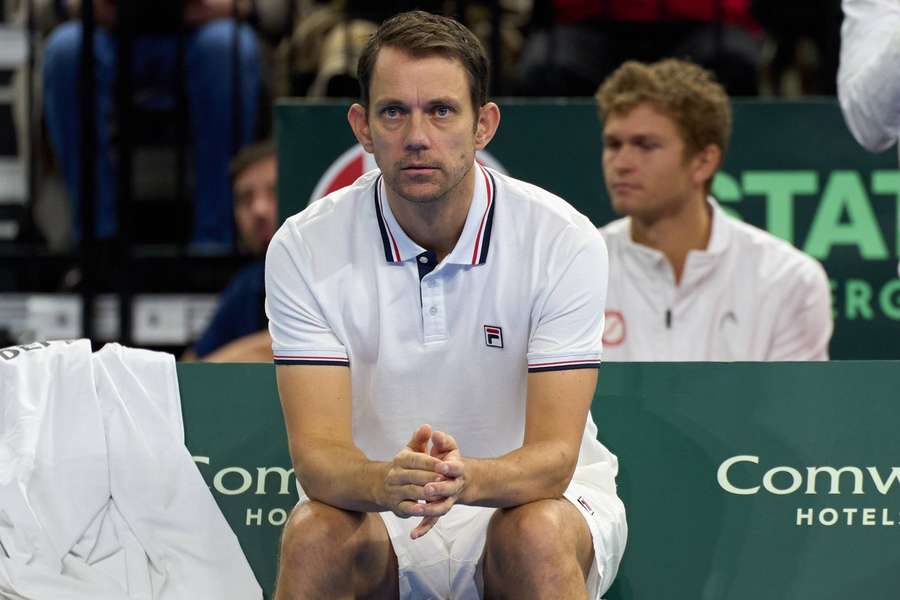Former Winner Wimbledon Frederik Lochte Nielsen explains why “peanut playing was any attractive matching matches”

In a series of three articles, FlashScore will explore the financial realities of professional tennis, from the huge need for parental economic support in fixing matches and huge career inequalities in establishing careers. In this piece, we focus on all the permanent problem of repairing matches, especially among low ranked players.
The world of tennis struck by a striking wave when in January 2019. suspected of repairing hundreds of matches and payments about 180 players from Europe.
Grigor Sargsyan was considered to be known as ‘maestro’, melody, a massive matching scheme, organized through encrypted messages, including tens of low-ranked players in small tournaments.
“Impresion we get is that it is very common”, “ One official said Associated Print Like up to 180 players, he suspected that he cooperated with the union, fastening matches, placements or games in exchange for a payment of 500 to 3,000 euros (570 to $ 3,400).
Chris Kronow Rasmussen, a professor of sports betting at the University of New Haven, said FlashScore If we were probably scratched only the surface when it comes to detecting the proportion of solidification of matches ranked below 200 in the world.
“It’s, of course, hard to say how big the problem is, but I think we just saw the tip of the iceberg.
“Sargsyan case gives an indication of how much problem can actually be. He was about 180 players in his portfolio, and there was probably about 1500 players in the world rank, a very high percentage of potentially fixed matches”Kronow Rasmussen said.
Kronow underlines that the WTA, ATP and ITF is partly responsible for creating a problem of fastening matches, because the prize money for many lower players do not cover or massive costs for coaching, food, food, travel and accommodation.
“In order to be ranked from No. 200 to No. 1000 in the world, there is a better incentive to waste matches on purpose and fix matches than to do their best to beat matches.
“You should repay all the tournaments in which the prize money is less than $ 50,000, because it is not financially worth the players, even if they finish the victory in the tournament, and that is a grotesque situation”says Kronow Rasmussen.
Each tournament has a quantity of prize money, which is dramatically varied depending on the type of event of the Grand Slam tournament (the players of the first year, salaries and ranking points continue to reduce lower levels of tournaments.
As such, the payment range at the ITF woman tour is 50 USD (first round of qualification on W25) at $ 15,239 for the winner at the W100 tournament.
Jamie LoebWho is currently 305. The place on the women’s WTA tour also says the differences in cash prizes are often misconceptions.
“People think if you beat a $ 25,000 tournament, that’s what you get, but I’m a joke is up to you.” That amount is divided between all, plus the cost, so you lose most of the time, even if you win “said Loeb to ESPN.
With the financial insecurity that is constantly hovering like a black cloud of young tennis battle to meet with ends, no wonder that some players are cut to themselves to repair matches to shady businessmen, according to Frederik Lochte NielsenFormer winner Wimbledon Parovinski tournament and current Danish Captain Davis Cup.
“There is no doubt that you have a system that is organized as today, where people play for peanuts and someone you want to lose the first set, and then there are many who can see them, because there are many who are caught,” Lochte Nielsen speaks Flashscore.
“Tennis is an incredibly attractive sport for betting because there are matches all year round and you make bets per point, so I think it will always be a big problem”He adds Lochte Nielsen, who previously admitted that the money was offered to lose deliberately, but immediately decided to turn it off.
The Unit of Tennis Integrity was set in 2008. year regarding tennis matches, but subsequently replaced the International Tennis Integrity Agency in 2020. years. Years. He had the possibility of imposing fines and sanctions and other tennis officials to participate in the tournaments. However, there is evidence that the system was far from efficient, as a report in 2018. year discovered a “Cunami corruption at lower level of tennis.”
The report emphasized that lower-level tennis has turned into fertile breeding on the number of players who fight for earning, and few people who are in 2012. year and ITF sells official data on Live in 2012. Years. Nothing has changed, says Kronow Rasmussen.
“A number of organizations regret it, when they find a tennis player who has cheated, but I can never find the perpetrators and would be better that the athletes were trained, or the rewards offered in the size of the players to live a polite life” Adds Kronow Rasmussen, who emphasizes that he does not think that any tennis player enjoys cheating.
“I think 70% of tennis players do this out of need, not because they think it’s fun to cheat. No one thinks it’s cold to lose on purpose.
“But if you get 5,000 euros, you can look through it because the family needs to have food on the table”, “ Concludes Kronow Rasmussen.